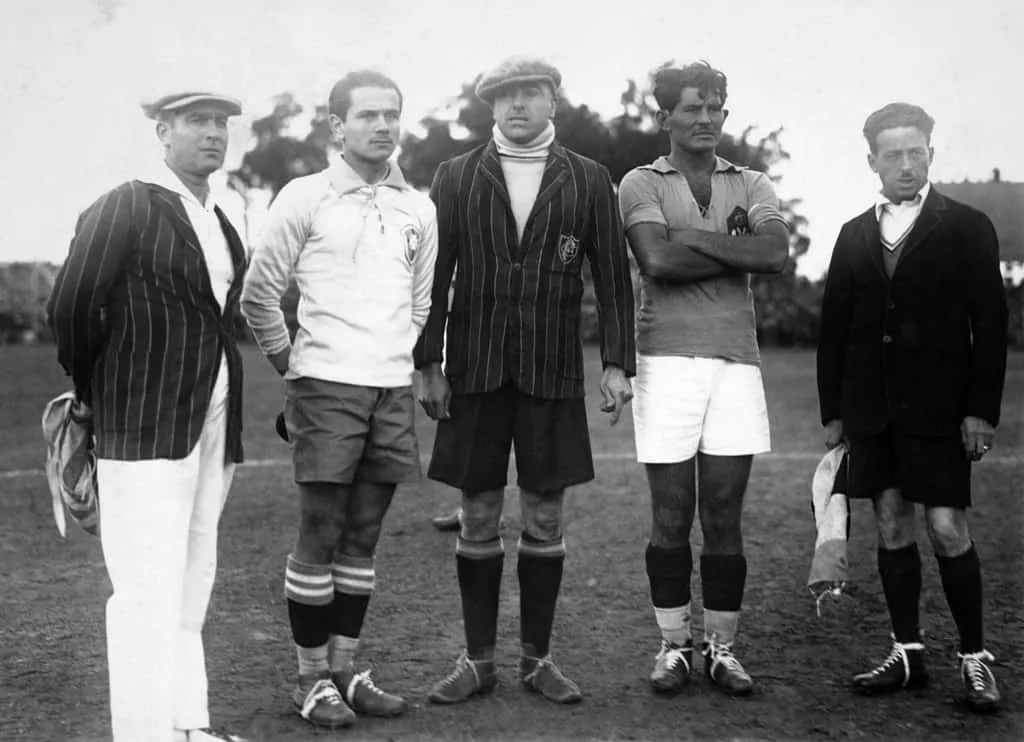The origins of soccer can be traced back to ancient China as early as B.C. times. The game of soccer originated as a ball game where players would kick a leather ball into a goal.
This early form of soccer was played by a number of players and was known as “folk football”. However, it wasn’t until the 19th century in England that the modern game of soccer started to take shape.

The first soccer game
The first documented game of soccer took place in 1863 in England. It was during this time that the first football association, now known as the Football Association (FA), was established.
The game called for a specific set of rules, including the prohibition of using hands to touch the ball, which set it apart from other ball games of the time.
The role of ball games in history
Ball games have been a part of human history for centuries. They have been played in various forms and with different rules in different cultures around the world.
In the case of soccer, the influence of rugby in the early variations of the game cannot be overlooked. Rugby had its own set of rules and was popular in England and Scotland, which had an impact on the development of soccer.
What were the early variations of soccer?
The influence of rugby
In the early years of soccer, there was a clear influence from rugby. The sport of rugby, which allowed players to carry the ball and tackle opponents, played a role in shaping the early variations of soccer.
However, as soccer began to gain popularity, it started to diverge from rugby and develop its own distinct rules and style of play.
The birth of soccer clubs
As the popularity of soccer grew, various soccer clubs started to form. One of the earliest soccer clubs was the Sheffield Football Club, founded in 1857 in Sheffield, England. These clubs provided a platform for organized matches and helped to spread the game further.

The development of association football
The development of association football, also known as soccer, took place in the late 19th century. This version of the game focused on using feet to control and pass the ball, rather than carrying it or using hands.
The establishment of the Football Association in 1863 played a significant role in the standardization of rules and the growth of the sport.
How did soccer evolve into the modern game?
The establishment of the Football Association
The establishment of the Football Association (FA) in 1863 marked a turning point in the evolution of soccer.
The FA set out a standardized set of rules that helped to streamline the game and ensure fair play. This allowed for more consistent and organized matches to take place, helping soccer to become a popular sport.
The standardization of rules
With the establishment of the FA and the adoption of a standardized set of rules, soccer started to evolve into a more structured and regulated game.
The rules helped to eliminate confusion and disputes during matches, and allowed for a more consistent and fair gameplay experience for both players and spectators.
The rise of soccer as a popular sport
Throughout the late 19th and early 20th centuries, soccer continued to grow in popularity. It became increasingly organized and professional, with the formation of leagues and the rise of professional soccer players. The game spread to other parts of the world, including Central America, where it gained a strong following.
What is the significance of the FIFA World Cup?
The birth of FIFA
FIFA, the Fédération Internationale de Football Association, was founded in 1904 as the international governing body for soccer. It was established to oversee the organization and regulation of soccer on a global scale.
The first FIFA World Cup in 1930
The FIFA World Cup is the most prestigious tournament in soccer, attracting teams from all over the world. The first World Cup took place in 1930 in Uruguay and was won by the host nation. It marked a major milestone in the global recognition and popularity of soccer.

The global impact of the tournament
The FIFA World Cup has had a significant impact on the growth and popularity of soccer worldwide. It brings together nations and cultures from all corners of the globe, creating a sense of unity and celebration of the sport.
The tournament showcases the highest level of soccer and has become a platform for players to showcase their skills and compete at an international level.
What are some interesting facts about soccer?
The use of leather balls
Back in the early days of soccer, leather balls were commonly used. These balls were made from animal bladders or tightly packed leather. They were sturdy and durable, but not as soft and lightweight as the modern soccer balls we use today.
The connection between soccer and the Han Dynasty
Interestingly, there is evidence to suggest that soccer has roots in ancient China. During the Han Dynasty, which lasted from B.C. 206 to A.D. 220, a game called “Cuju” was played. Cuju bears similarities to modern soccer and involved players kicking a ball into a net.
The spread of the sport to Central America
Soccer’s popularity transcended borders and reached Central America. The sport gained a strong following in countries such as Mexico, Costa Rica, and Honduras. Today, Central America has produced many talented soccer players who have made their mark on the international stage.
Frequently Asked Questions:
Q: When and where was soccer invented?
A: Soccer was invented in England in the 19th century.
Q: Who invented soccer?
A: The exact person who invented soccer is unknown, but it originated in England.
Q: How did the invention of soccer come about?
A: The invention of soccer can be traced back to the early versions of the game known as football. The rules of the game were not clearly defined, and different regions played their own variations. Eventually, the need for a unified set of rules led to the establishment of the Football Association in England in 1863.
Q: Was soccer always known as soccer?
A: No, the word “soccer” is a derivative of “association football” and was used to differentiate the game from “rugby football.” In the early years, the term “soccer” was commonly used in England, while “football” referred to what is now known as “rugby.”
Q: What were the earliest forms of soccer like?
A: The earliest forms of soccer were often unstructured and had varying rules depending on the region. They typically involved kicking a ball and trying to score goals.
Q: When did modern soccer as we know it today begin?
A: Modern soccer began to take shape in England in the late 19th and early 20th centuries. The establishment of soccer clubs, the development of organized leagues, and the standardization of rules all contributed to the evolution of the game.
Q: What role did the Football Association play in the invention of soccer?
A: The formation of the Football Association in 1863 played a crucial role in the invention of soccer. It brought together various clubs in England and established a common set of rules that laid the foundation for the game we know today.
Q: How did rugby and association football diverge from each other?
A: Rugby and association football were initially very similar, but they started to diverge as different regions and organizations developed their own variations of the game. The rules and playing styles of rugby and association football gradually became distinct from each other.
Q: What is the difference between soccer and football?
A: In many parts of the world, soccer and football are used interchangeably to refer to the same sport. However, in some regions, “soccer” is used to distinguish the game from American football or other variations of football.
Q: When was the first official soccer game played?
A: The first official soccer game, following the establishment of the Football Association, was played in England on December 19, 1863.
Q: How has soccer evolved over time?
A: Soccer has evolved significantly since its early days. The invention of soccer led to the development of organized leagues, professional football, and global competitions like the World Cup. The introduction of new rules, technologies, and strategies has also shaped the modern game.
